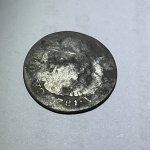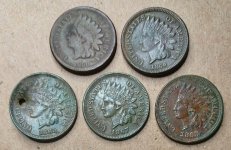kenb
Bronze Member
Castle's secrete tunnels to be searched
Search for castle’s secret tunnels
Jan 14 2008 by Steffan Rhys, Western Mail
A NETWORK of secret tunnels could be uncovered under a Welsh town today as archaeologists start to excavate the site of a former castle and prison.
It is the first excavation in the grounds of Haverfordwest Castle since 1914, when diggers uncovered a sealed jam jar with a message addressed “to future explorers” rolled up inside.
During that dig 94 years ago, one worker who struck his pick axe through the ground was met with an upsurge of air which turned out to have come from an underground chamber 17ft high.
But although the beginnings of other buried passages were found, excavations were abandoned.
Now, Haverfordwest Town Museum, which is based in the castle’s grounds, wants to extend its current building to house a gallery but Cadw have insisted an archaeological exploration takes place first.
The museum’s curator, Simon Hancock, said, “We are very excited about this dig. It could add an awful lot to our understanding of the castle.
“It’s quite possible there are a number of tunnels under there which could be quite long. There is reference to one which began under one of the castle’s towers and stretched to underneath a garden of a nearby home.
“We just don’t know what’s under there at the moment and it’s very difficult to say what any tunnels would have been used for.
“It’s something we’re dying to look at. There is no knowing what we might find.”
Haverfordwest Castle dates to the 12th century, with Giraldus Cambrensis recording a prison there as early as 1188. In 1779, a county prison was built within the castle’s remains, which was used until 1878, when it became home to the Pembrokeshire Constabulary, who used it until the 1960s. The present museum has been housed there since 1996.
The castle was also the scene of some notable executions, among them William Roblin, hanged for shooting a gamekeeper in 1821.
After his execution, Roblin’s corpse was anatomised by surgeons before being buried in the castle grounds. But his skeleton was later dug up and sold for 18 pence to Haverfordwest chemist William Williams.
Also executed there was John Griffiths, in 1811, for the poisoning of his two wives.
In 1914, as the excavation was carried out by a local building contractor, the Pembrokeshire County Guardian wrote, “The contractor and his men have been engaged there for some time but one day their attention was drawn by Inspector Jones to a patch of green.
“He was firm in his belief that the ground below was hollow. One of the men took a pick axe to the spot with the result that a hole was found through which came a great rush of air.
“Since then, four or five men have entered this cavity and, judging from the measurements taken, there must have been a room the height of which is 17ft 6in. It is also believed that several tunnels led from this chamber to different parts of the town.”
A further hollow measuring 8ft by 7ft was uncovered but excavations were then abandoned for fear of collapse.
The jar had been left there after a man pushing a wheelbarrow inside the castle felt the ground begin to give way underneath him and an excavation was ordered.
The letter inside read, “To future explorers, this paper was placed here, supposed to be a cellar of the castle in its original splendour of the 12th Century, on January 19, 1871.
“Deposited by warder Eynon Morgan, the prison staff were William Saunders, the governor, warden Tomos Watkins, matron Emma Brown, assistant matron Martha Woodbine.”
kenb
Search for castle’s secret tunnels
Jan 14 2008 by Steffan Rhys, Western Mail
A NETWORK of secret tunnels could be uncovered under a Welsh town today as archaeologists start to excavate the site of a former castle and prison.
It is the first excavation in the grounds of Haverfordwest Castle since 1914, when diggers uncovered a sealed jam jar with a message addressed “to future explorers” rolled up inside.
During that dig 94 years ago, one worker who struck his pick axe through the ground was met with an upsurge of air which turned out to have come from an underground chamber 17ft high.
But although the beginnings of other buried passages were found, excavations were abandoned.
Now, Haverfordwest Town Museum, which is based in the castle’s grounds, wants to extend its current building to house a gallery but Cadw have insisted an archaeological exploration takes place first.
The museum’s curator, Simon Hancock, said, “We are very excited about this dig. It could add an awful lot to our understanding of the castle.
“It’s quite possible there are a number of tunnels under there which could be quite long. There is reference to one which began under one of the castle’s towers and stretched to underneath a garden of a nearby home.
“We just don’t know what’s under there at the moment and it’s very difficult to say what any tunnels would have been used for.
“It’s something we’re dying to look at. There is no knowing what we might find.”
Haverfordwest Castle dates to the 12th century, with Giraldus Cambrensis recording a prison there as early as 1188. In 1779, a county prison was built within the castle’s remains, which was used until 1878, when it became home to the Pembrokeshire Constabulary, who used it until the 1960s. The present museum has been housed there since 1996.
The castle was also the scene of some notable executions, among them William Roblin, hanged for shooting a gamekeeper in 1821.
After his execution, Roblin’s corpse was anatomised by surgeons before being buried in the castle grounds. But his skeleton was later dug up and sold for 18 pence to Haverfordwest chemist William Williams.
Also executed there was John Griffiths, in 1811, for the poisoning of his two wives.
In 1914, as the excavation was carried out by a local building contractor, the Pembrokeshire County Guardian wrote, “The contractor and his men have been engaged there for some time but one day their attention was drawn by Inspector Jones to a patch of green.
“He was firm in his belief that the ground below was hollow. One of the men took a pick axe to the spot with the result that a hole was found through which came a great rush of air.
“Since then, four or five men have entered this cavity and, judging from the measurements taken, there must have been a room the height of which is 17ft 6in. It is also believed that several tunnels led from this chamber to different parts of the town.”
A further hollow measuring 8ft by 7ft was uncovered but excavations were then abandoned for fear of collapse.
The jar had been left there after a man pushing a wheelbarrow inside the castle felt the ground begin to give way underneath him and an excavation was ordered.
The letter inside read, “To future explorers, this paper was placed here, supposed to be a cellar of the castle in its original splendour of the 12th Century, on January 19, 1871.
“Deposited by warder Eynon Morgan, the prison staff were William Saunders, the governor, warden Tomos Watkins, matron Emma Brown, assistant matron Martha Woodbine.”
kenb




